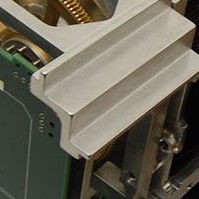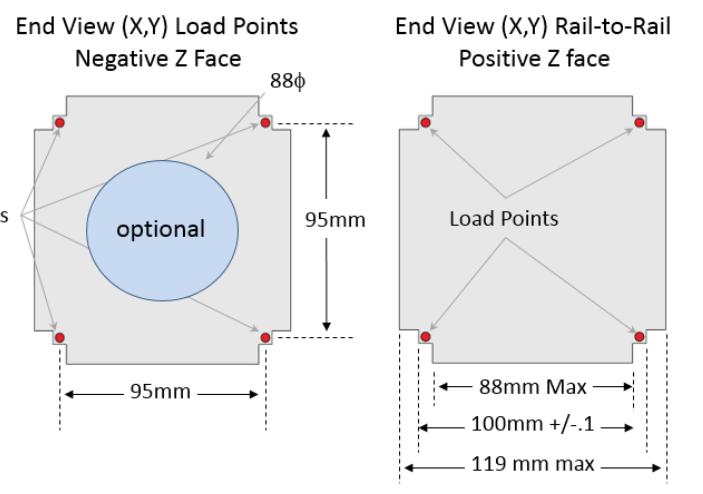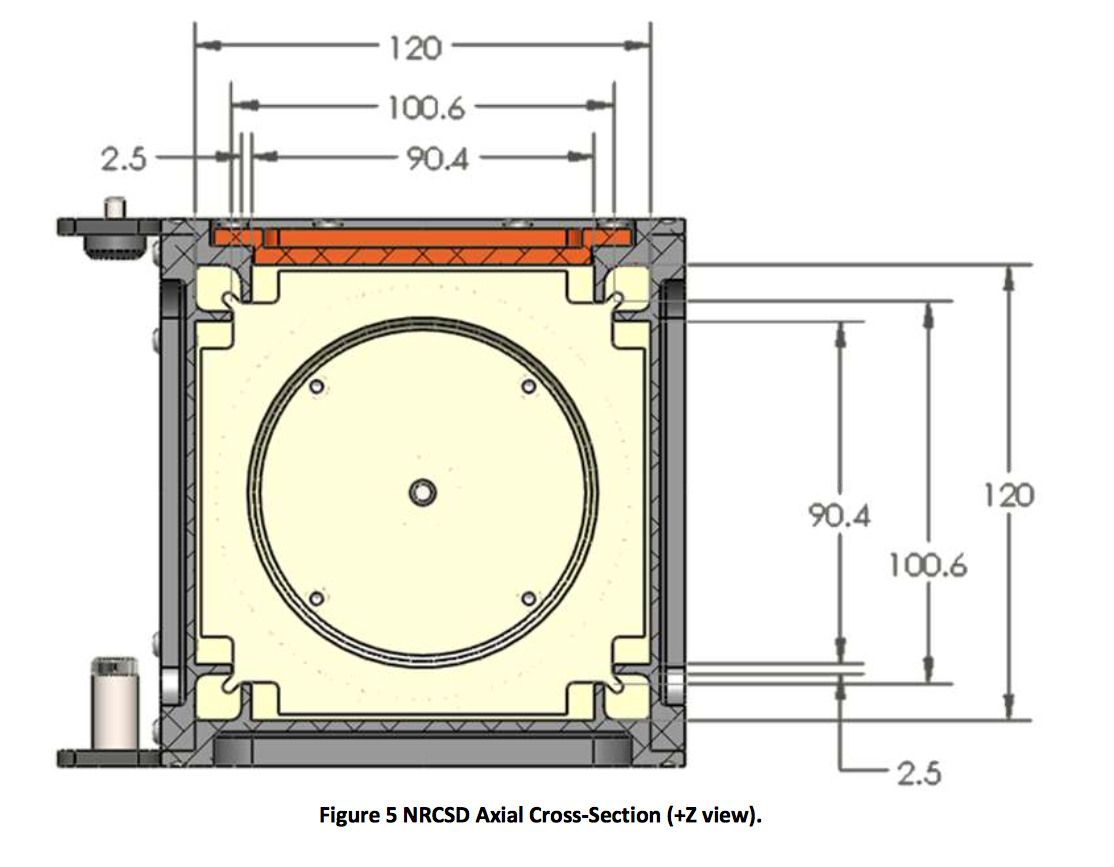
After reading the 1U CubeSat Acceptance checklist, I noticed that it might be possible for sides to protrude by less than or equal to 6.5mm. The important aspect is to make sure the satellite only touches the deployer on the rails.
I noticed on the LightSail-1 CubeSat that they didn’t have rails, rather a “wrap around” (for lack of better term) style of sliders. I was wondering if perhaps this was a special case, or if such a style can be used with any design.
Read on for the information I found during my research
What deployers are there?
NanoRacks

Source: http://rdimitrov.twistedsanity.net/skycube/
There are two NanoRacks are installed on the ISS. Each can contain 16 payloads (NanoLabs) in a CubeSat form factor.
Source:
http://nanoracks.com/resources/faq/
The maximum mass for a 1u CubeSat in a NanoRacks is 2.82 kg.
Here you can see that the CubeSats can be 119mm max, if you use the “wrap around” sliders.

The inside of the NanoRacks CubeSat Deployer:

The document follows with more details regarding the rails and standoffs. It also includes a vibration testing profile, this will be useful for evaluation in the future.
NanoRacks CubeSat Deployer (NRCSD) Interface Control Document Source: http://nanoracks.com/wp-content/uploads/Current_edition_of_Interface_Document_for_CubeSat_Customers.pdf
P-POD
California Polytechnic State University’s (CalPoly) Poly Picosatellite Orbital Developers (P-POD)
The maximum mass of a 1U CubeSat shall be 1.33 kg.
Here you can see that in the CubeSat design spec, they do not show that you can have protrusions from the side faces on your structure:
Source: Revision 13, CubeSat Design Specification, Updated 4-6-2015
http://www.cubesat.org/index.php/documents/developers
Other
- Aerospace Corporation Picosatellite Orbital Deployer (A-POD)
- University of Tokyo’s Tokyo Picosatellite Orbital Deployer (T-POD) which was used for the first launch of CubeSats in 2003
- University of Toronto’s experimental Push Out Deployer (X-POD)
- Ecliptic RocketPod ™
- CSS (CUTE Separation System) - Tokyo Institute of Technology (TITech)
- X-POD (eXperimental Push Out Deployer) - University of Toronto Institute for Aerospace Studies/Space Flight Laboratory (UTIAS/SFL)
- SPL (Single Picosatellite Launcher) - AFW (Astro und Feinwerktechnik Adlershof GmbH), Berlin, Germany
- ISIPOD (ISIS Payload Orbital Dispenser) - Innovative Solutions In Space, BV of Delft, The Netherlands
- J-POD (JAXA-Picosatellite Orbital Deployer) - JAXA
- NPSCuL (Naval Postgraduate School CubeSat Launcher) - NPS, Monterey, CA
Sources: http://mech372.engr.scu.edu/References/DRAFT IEEE Aero Sys Mag article.pdf
https://directory.eoportal.org/web/eoportal/satellite-missions/c-missions/cubesat-concept
Sample of CubeSats and their rails
I looked at a sampling of CubeSats to see how they implemented their rails and what system they were deployed using.
Images credit to their respective owners.
Conclusion
After looking and researching these various satellites, I have some better ideas on how to go about implementing the rails on the sides of RDAS. It was interesting to see the differences between the NanoRacks documents and the CubeSat / P-POD documents.
While researching, found some great resources:
- List of CubeSats- SkyRocket.de:
http://space.skyrocket.de/doc_sat/cubesat.htm
- Small Sat Briefing
In this presentation, there is one slide about ‘Next Generation Satellites’. Unfortunately no date on it. A 3u CubeSat would be classified as a 1N. These can be placed adjacent to each other to create a 2N and 4N. Stacking them creates a quad, a 1Q and 2Q.
This means that if I ever have to create a unit that is larger, looking at it this way would be beneficial because of the standards.
Source: http://www.censec.dk/Files/Filer/CenSec/Konference/2011/Small Sat Briefing_V4.pdf
- GeneSat-1 high res photos:
https://www.nasa.gov/centers/ames/multimedia/images/2006/genebox_prt.htm
- Nanoracks Documents:
 EK
EK
Discussions
Become a Hackaday.io Member
Create an account to leave a comment. Already have an account? Log In.